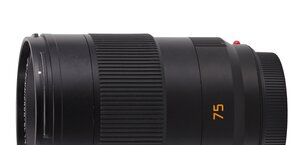Sony FE 20-70 mm f/4 G
8. Vignetting
| A7R III, APS-C, JPEG, 20 mm, f/4.0 | A7R III, APS-C, JPEG, 20 mm, f/5.6 |

|

|
| A7R III, APS-C, JPEG, 35 mm, f/4.0 | A7R III, APS-C, JPEG, 35 mm, f/5.6 |

|

|
| A7R III, APS-C, JPEG, 50 mm, f/4.0 | A7R III, APS-C, JPEG, 50 mm, f/5.6 |

|

|
| A7R III, APS-C, JPEG, 70 mm, f/4.0 | A7R III, APS-C, JPEG, 70 mm, f/5.6 |

|

|
In this case you won't see any problems at any focal length. At 20 mm and by f/4.0 vignetting amounts to 14% (−0.44 EV), decreasing to 12% (-0.37 EV) on stopping down the aperture to f/5.6 or stronger.
Please Support UsIf you enjoy our reviews and articles, and you want us to continue our work please, support our website by donating through PayPal. The funds are going to be used for paying our editorial team, renting servers, and equipping our testing studio; only that way we will be able to continue providing you interesting content for free. |
- - - - - - - - - - - - - - - - - - - - - - - - - - - - - - - - - - - - - - - - - - - - - - - -
At the 35 mm focal length and maximum relative aperture brightness loss in frame corners reaches 11% (−0.35 EV) and it decreases to 9% (−0.26 EV) when you stop the aperture to f/5.6. A very similar performance can be observed at 50 mm where, by f/4.0, vignetting is 11% (−0.33 EV) and it decreases to 7% (−0.20 EV) after applying f/5.6.
At the maximum focal length vignetting increases once again, reaching 14% (−0.42 EV), but still it's barely noticeable. Especially that by f/5.6 it decreases to just 5% (−0.16 EV).
The performance on RAW files is just slightly weaker and small wonder - distortion on the APS-C size detector remains moderate in most cases so there is no need to correct it strongly and crop images afterwards. As a result, vignetting on RAW files, when compared to the results on JPEG images, differs only at the shortest focal lengths, being by 2-3 percentage points higher. At longer focal lengths that difference becomes negligible, fitting the margin of measuring error.
Now let's check how the situation changes after passing to full frame. We start our analysis with JPEG files and appropriate thumbnails you can find below.
| A7R III, FF, JPEG, 20 mm, f/4.0 | A7R III, FF, JPEG, 20 mm, f/5.6 |

|

|
| A7R III, FF, JPEG, 35 mm, f/4.0 | A7R III, FF, JPEG, 35 mm, f/5.6 |

|

|
| A7R III, FF, JPEG, 50 mm, f/4.0 | A7R III, FF, JPEG, 50 mm, f/5.6 |

|

|
| A7R III, FF, JPEG, 70 mm, f/4.0 | A7R III, FF, JPEG, 70 mm, f/5.6 |

|

|
At a very difficult combination of ultra wide angle of view and the maximum relative aperture you lose as much as 67% (−3.18 EV) of light in the frame corners. This result is very high but also completely understandable when it comes to such parameters. Stopping down the aperture helps to reduce this aberration but is not especially efficient. By f/5.6 vignetting amounts to 52% (−2.14 EV), by f/8.0 it reaches 43% (−1.61 EV), and by f/11.0 it gets to 37% (−1.33 EV). Even by the f/16.0 aperture you still get a lot of chances to notice this aberration, its level being 33% (−1.17 EV).
Fortunately when you increase the focal length the results improve distinctly. At 35 mm and by f/4.0 the aberration, described here, reaches 48% (-1.90 EV) and it decreases to 29% (-0.99 EV) after applying f/5.6. On stopping down the lens to f/8.0 or stronger vignetting stabilizes on a level of 21% (-0.69 EV).
Similar results can be noticed at the 50 mm focal length. By f/4.0 brightness loss in the frame corners amounts to 45% (-1.72 EV), by f/5.6 it decreases to 26% (-0.86 EV), and by f/8.0 it drops to 16% (-0.52 EV); further stopping down doesn't have any influence over the level of vignetting.
At the maximum focal length you see a return of higher values because in the case of the maximum relative aperture you have to take into account vignetting of 54% (-2.22 EV), which decreases to 32% (-1.11 EV) on applying f/5.6. By f/8.0 the aberration reaches 21% (-0.68 EV), and by f/11.0 it drops to 15% (-0.48 EV). By f/16.0 it decreases even further, this time to 13% (-0.39 EV).
In case of full frame we decided not to analyse vignetting on RAW files because, in a way, it wouldn't be fair. At the shortest focal length the lens provides you a field of almost 10 degrees wider than officially stated so it is well understood that it performs on a border of its image circle in order to allow efficient distortion correction and further cropping. Out of our chronicle duty we just say that at the longer focal lengths differences between JPEG and RAW files are low and they increase, for obvious reasons, at the 20 mm focal length. In this case by f/4.0 you have to take into account vignetting of 77% (-4.32 EV), which decreases to 68% (-3.30 EV) on stopping down the aperture to f/5.6.
| Sony A7R III, 20 mm, JPEG, f/4.0 |
 |
| Sony A7R III, 35 mm, JPEG, f/4.0 |
 |
| Sony A7R III, 50 mm, JPEG, f/4.0 |
 |
| Sony A7R III, 70 mm, JPEG, f/4.0 |
 |






